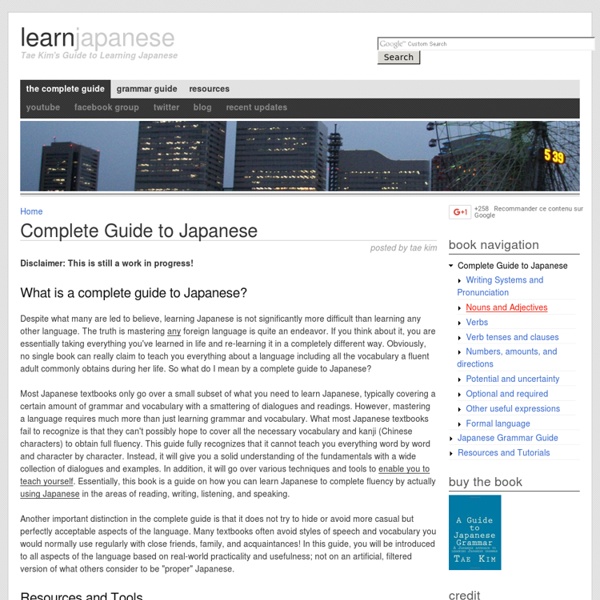Complete Guide to Japanese

faq - LearnJapanese - Aurora
Computerized Kanji-Study Aids
Computerized Kanji-Study Aids by Jeremiah Stone Those who have been studying Japanese as adults know the frustration of trying to pick up a book and read. This article looks at four programs that can help the frustrated student to expand his/her Japanese vocabulary and pool of kanji. The beta version reviewed here did not have a manual (stuck in printing) and works only in 256 colors; both of these restriction will be fixed by release time. The Japanese WordMaster program is advertised as a "vocabulary and kanji study system." Overall, the program is great for someone who doesn't want to give a lot of space over to the Japanese system, or bigger study programs. MacSUNRISE Script 2.0 This offering comes from the well known international team of Wolfgang Hadamitzky and Mark Spahn, authors of several kanji dictionaries and study guides. This program uses onscreen buttons to control its functions, requiring a search through the manual to find what each button does. KanjiWorks Mikan 1.0
Learn Japanese | Tae Kim's Guide to Learning Japanese - Aurora
Kanji-A-Day.com - Learn Japanese Free
Learn Kanji Using Radicals | KANJIDAMAGE - Aurora
Drill and learn the Japanese kanji, learn Japanese
You must enable Java to view the applet You seem to be running Firefox.If you are running an old version of Firefox, first have a look in Tools/Options/Content, make sure "Enable Java" is checked, click OK and reload the page.Starting with Firefox 4, click on the Firefox orange menu (top left of the window), choose Add-ons, click Plugins and make sure the Java plugin is activated.If Java is not in the list please visit this page if you wish to download Java:Sun Microsystems Java download Finally, if the applet still does not display, go this support page of Mozilla.org.Support Mozilla.com, Using the Java plugin with Firefox. You will then be invited to test a Sun Microsystem applet and generally that will solve the problem. <table cellpadding=3 cellspacing=0 border=1 bordercolor="#ff0000"><tr><td align="center"><span><b>You must enable JavaScript if you want to use this site.</b><BR></span></td></tr></table> If the Java applet does not display, please read the following page: Java Settings
List of jōyō kanji
Jōyō kanji consists of 2,136 characters. For brevity, only one English translation is given per kanji.The "Grade" column specifies the grade in which the kanji is taught in Elementary schools in Japan. Grade "S" means that it is taught in secondary school.The list is sorted by Japanese reading (on'yomi then kun'yomi), in accordance with the ordering in the official Jōyō table.This list does not include characters that were present in older versions of the list but have since been removed (勺, 銑, 脹, 錘, 匁).Hyphens in the kun'yomi readings separate kanji from their okurigana.The "Old" column reflects the official kyūjitai specified in the standard Jōyō table;[1] it does not include unofficial, extended, or Asahi characters.[discuss]The readings presented here are those noted in the official Jōyō table.[2] Special readings and uncommon readings are indicated in brackets.[3] Other readings (generally less common, such as the nanori) may also exist. See also[edit] External links[edit] Notes[edit]
Related:
Related:



